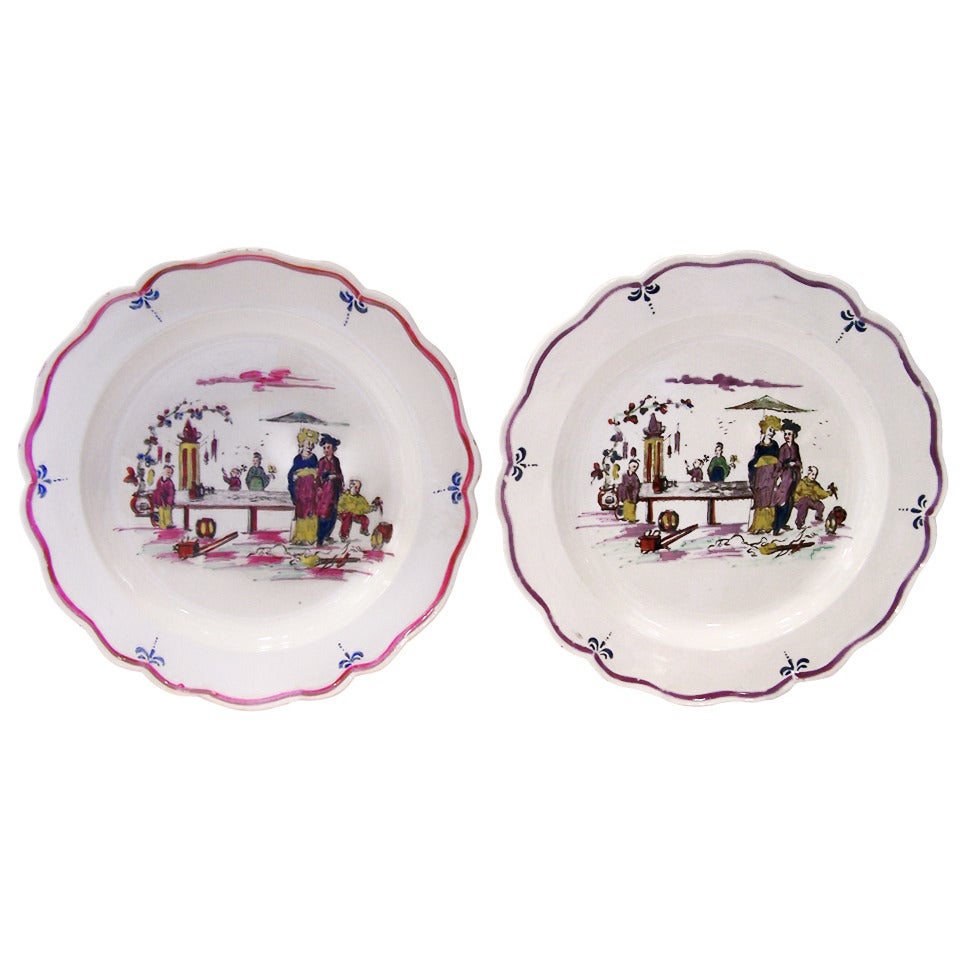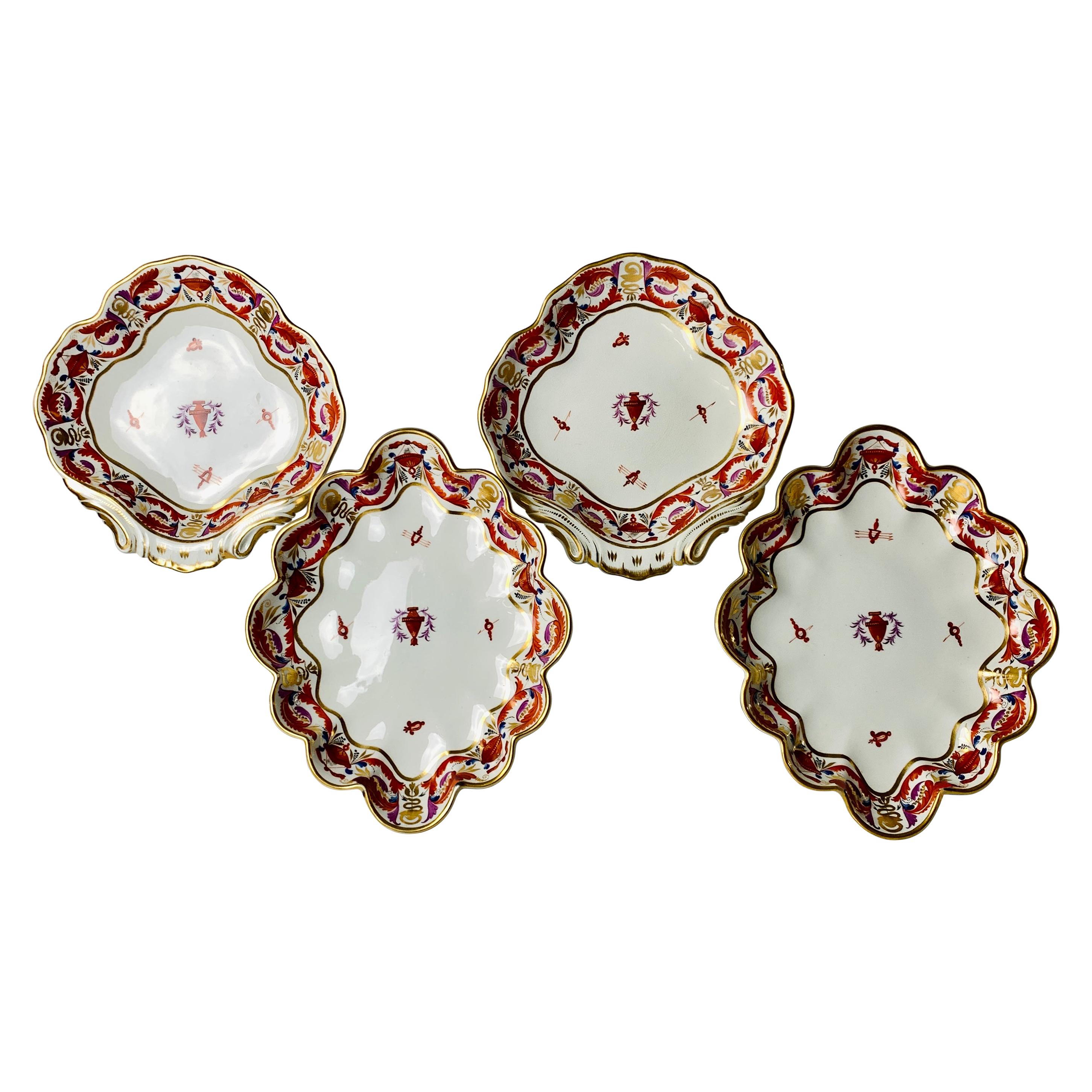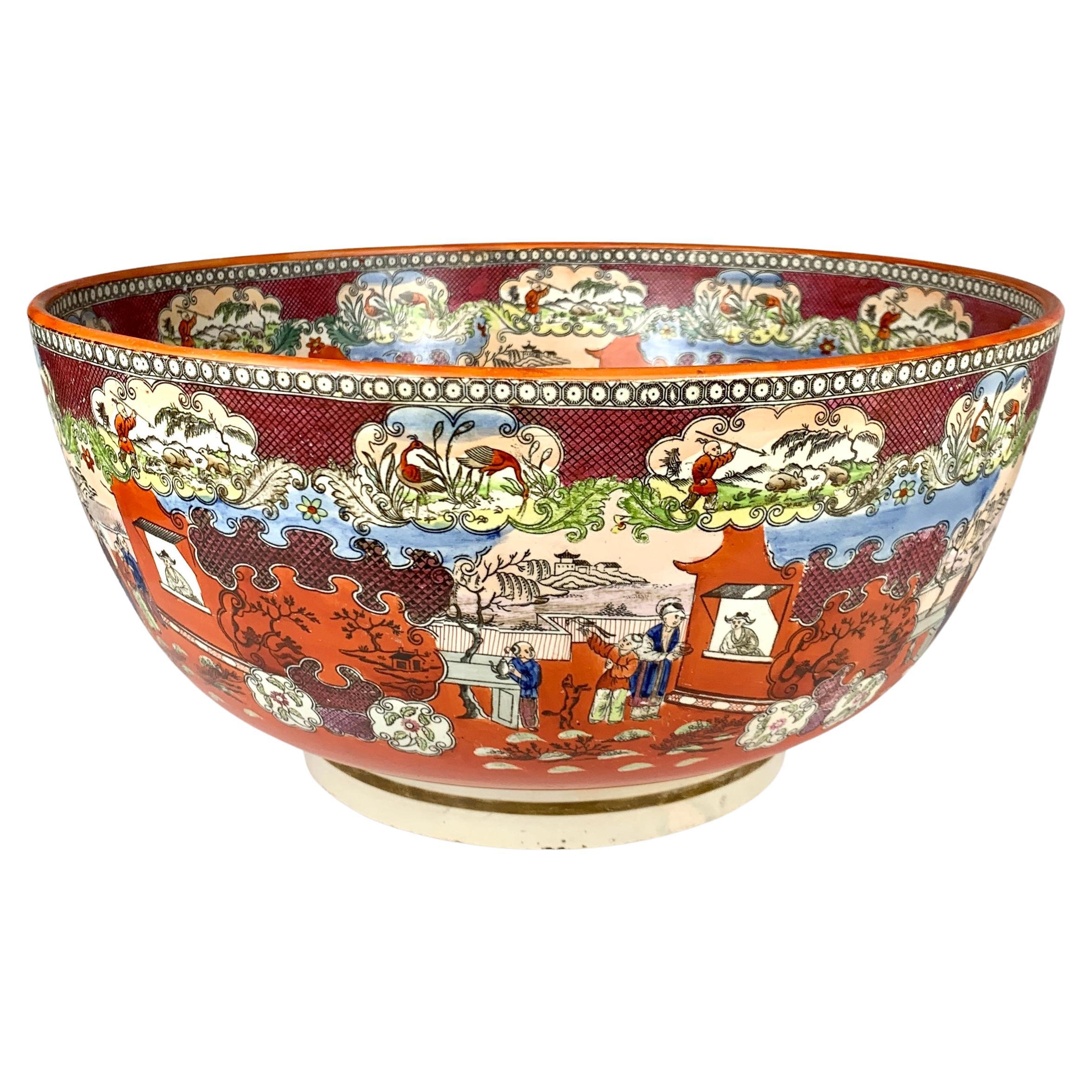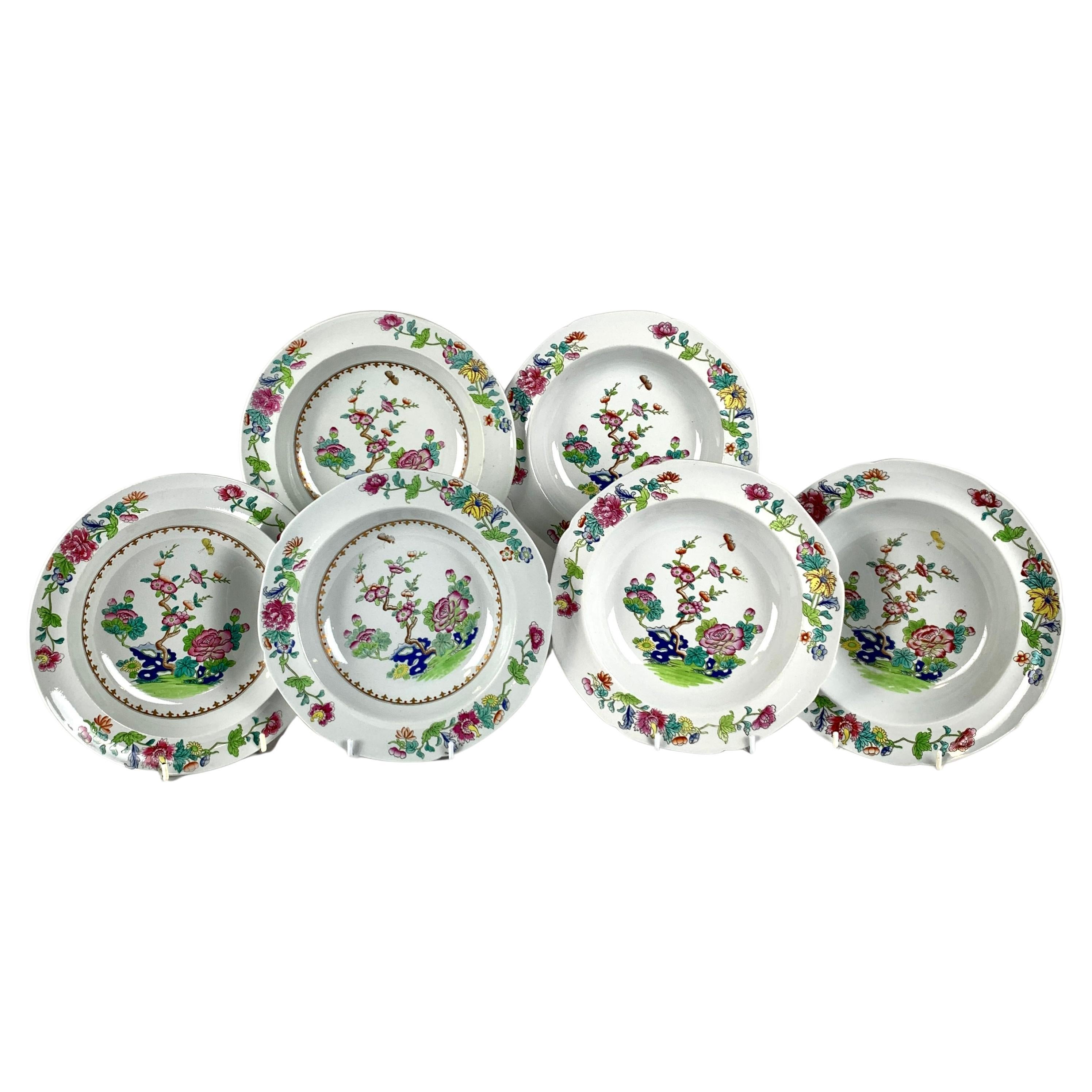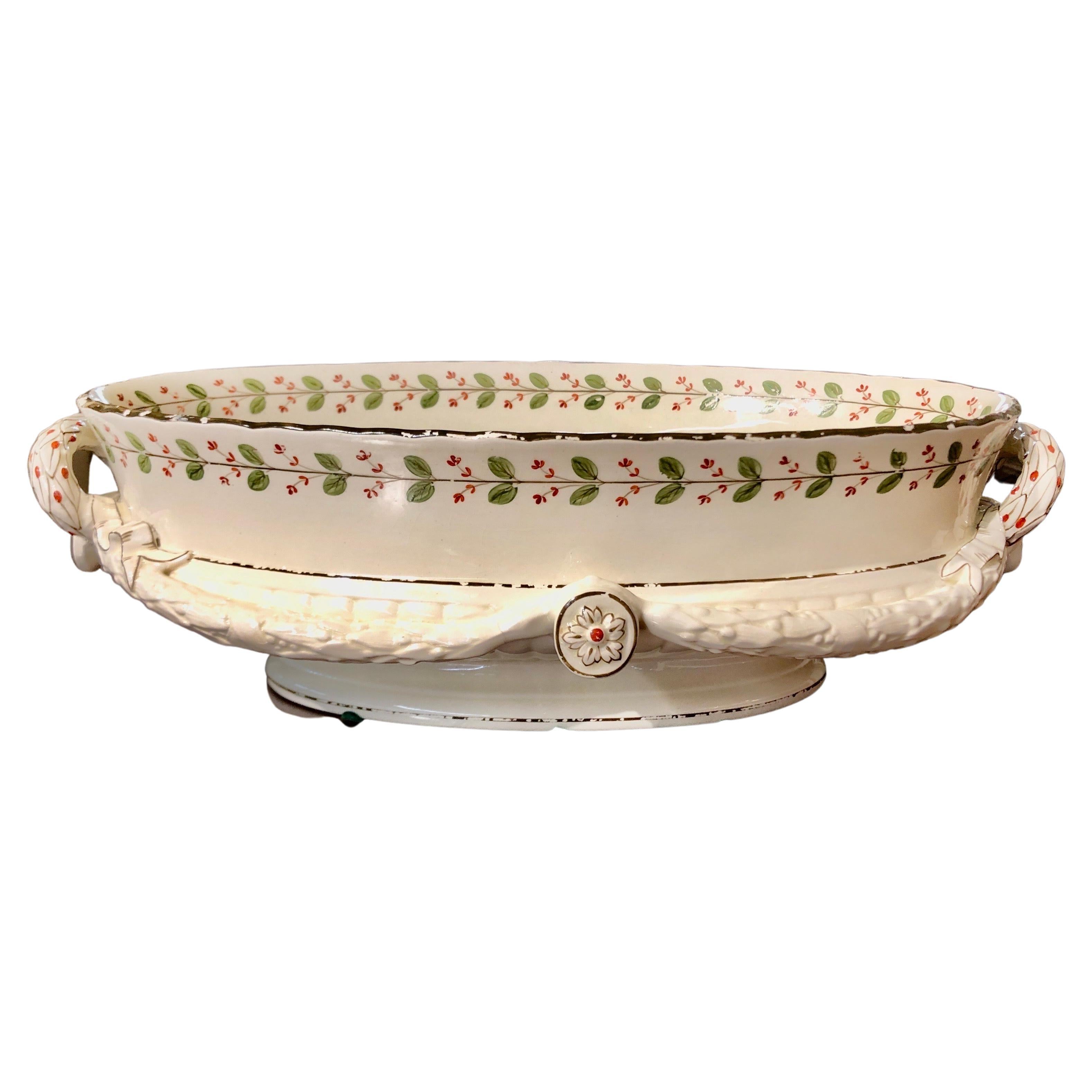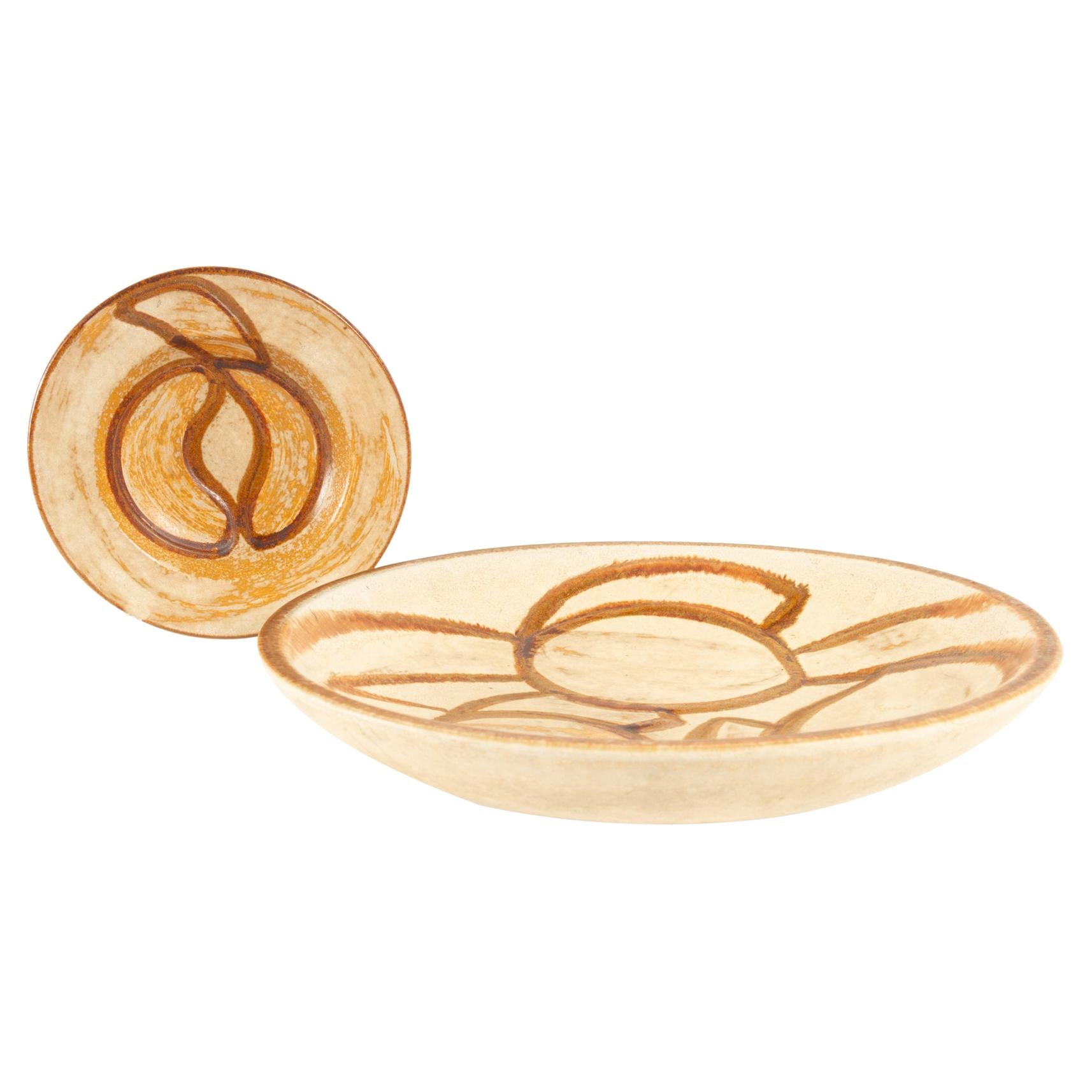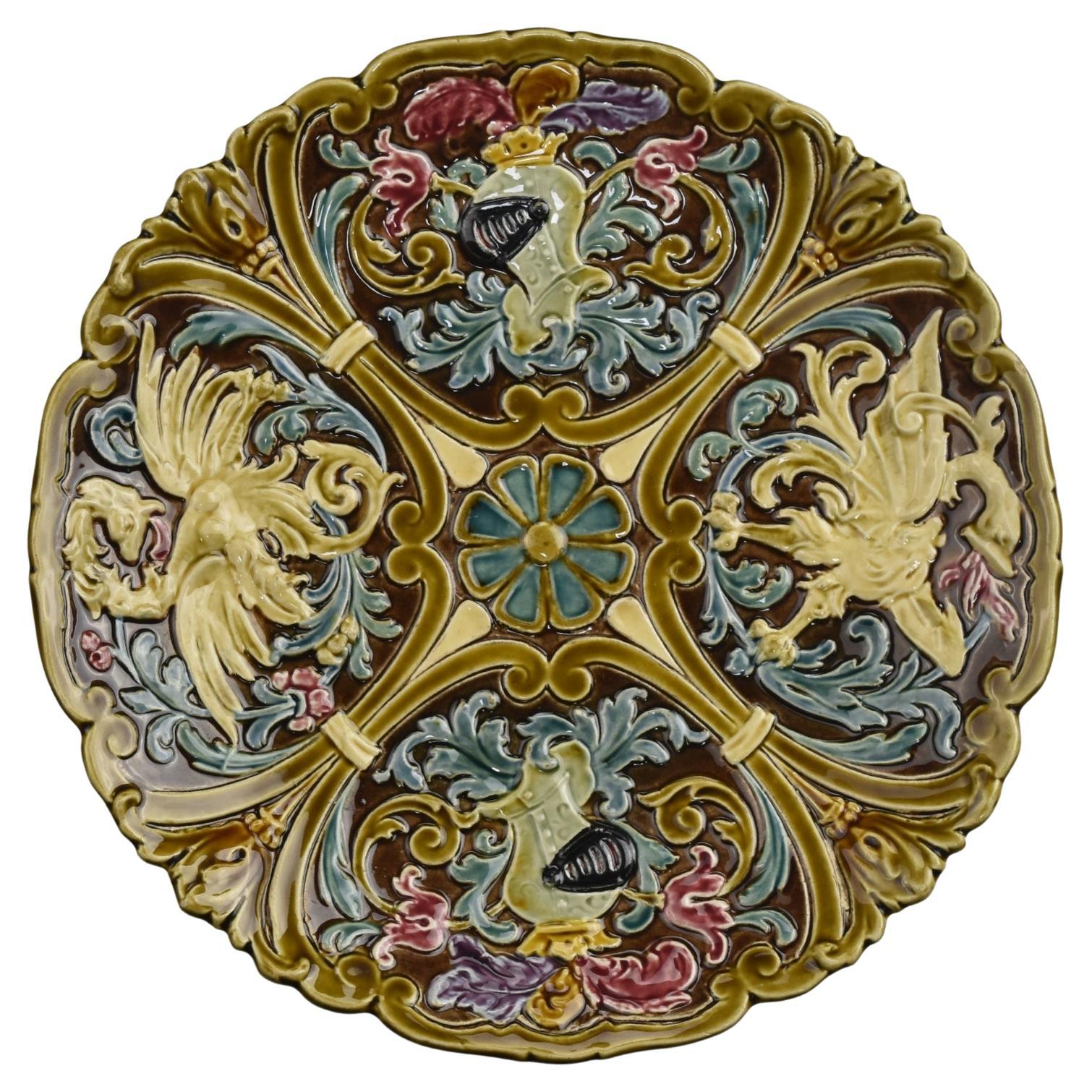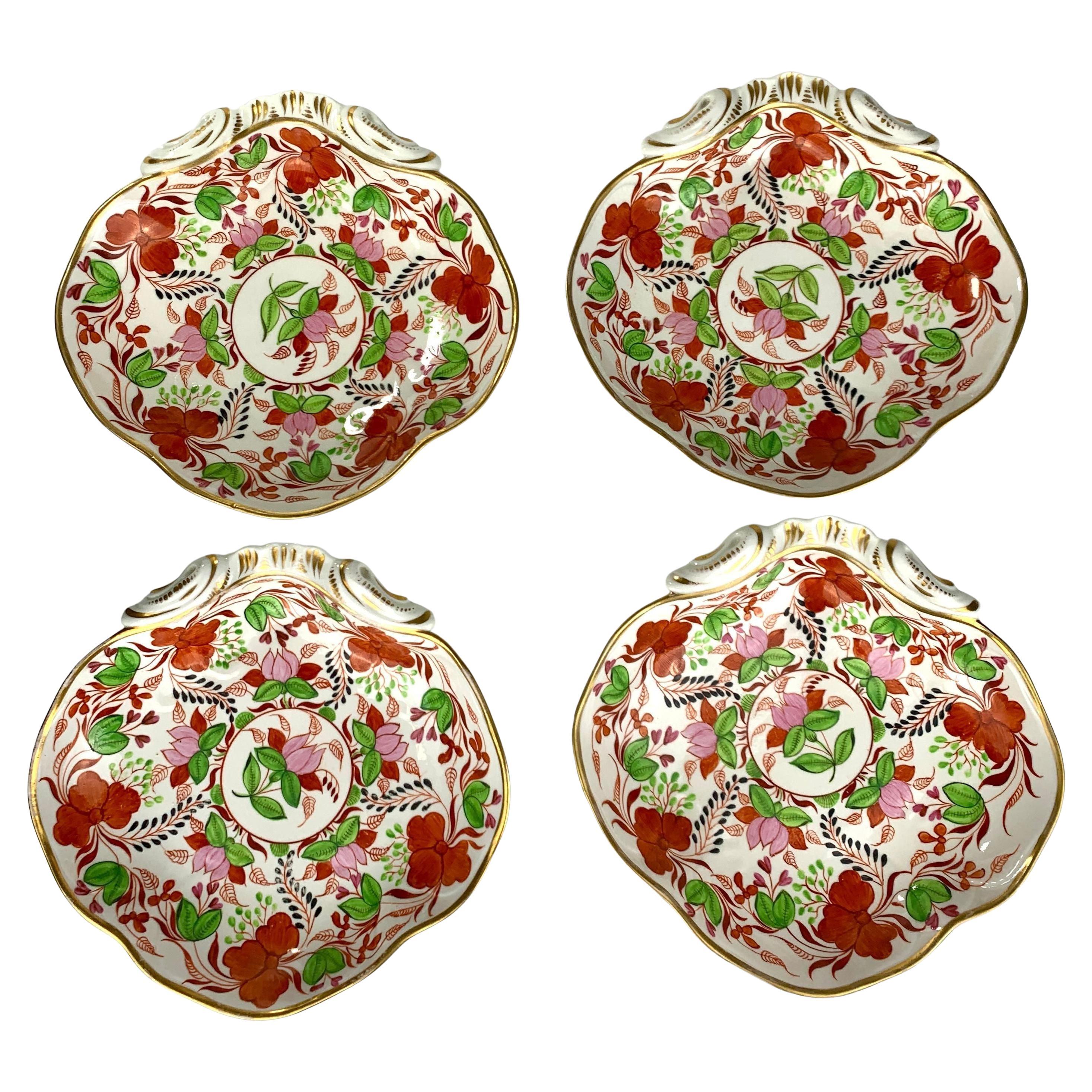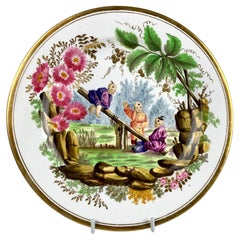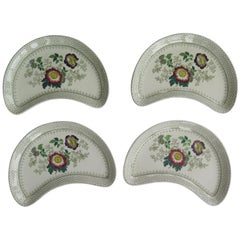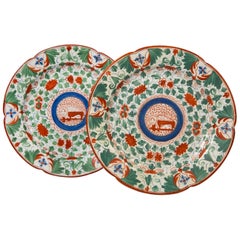
Pair of Antique Creamware Dishes Featuring Dragons England circa 1810
View Similar Items
Want more images or videos?
Request additional images or videos from the seller
1 of 14
Pair of Antique Creamware Dishes Featuring Dragons England circa 1810
About the Item
- Creator:Minton (Maker)
- Dimensions:Height: 1 in (2.54 cm)Diameter: 9.25 in (23.5 cm)
- Sold As:Set of 2
- Style:Chinoiserie (Of the Period)
- Materials and Techniques:
- Place of Origin:
- Period:
- Date of Manufacture:circa 1810
- Condition:
- Seller Location:Katonah, NY
- Reference Number:1stDibs: LU866513044102
About the Seller
5.0
Recognized Seller
These prestigious sellers are industry leaders and represent the highest echelon for item quality and design.
Platinum Seller
These expertly vetted sellers are 1stDibs' most experienced sellers and are rated highest by our customers.
Established in 1962
1stDibs seller since 2009
422 sales on 1stDibs
Typical response time: 1 hour
More From This SellerView All
- Pair Creamware Dishes 18th Century England Painted in Pink & Purple Made c-1785Located in Katonah, NYThis is a pair of English creamware dishes from the 18th century, created around 1785. The plates display a lovely chinoiserie scene with women selecting accessories. The scene depic...Category
Antique Late 18th Century English Chinoiserie Ceramics
MaterialsCreamware
- Antique Porcelain Chinoiserie Plate Hand Painted by Minton England Circa 1810By MintonLocated in Katonah, NYMade in England circa 1810, this Minton porcelain dish is a masterpiece of English Regency chinoiserie. The hand-painted scene exhibits vibrant colors, intricate details, and a playf...Category
Antique Early 19th Century English Chinoiserie Decorative Dishes and Vid...
MaterialsPorcelain
- Two Pairs of Derby Porcelain Shaped Dishes Hand-Painted England, Circa 1810By Crown DerbyLocated in Katonah, NYThis group of four Derby Porcelain dishes was hand-painted in England circa 1810. An exquisite design of curling feathers and neoclassical objects d...Category
Antique Early 19th Century English Regency Decorative Dishes and Vide-Poche
MaterialsPorcelain
- Large Punch Bowl showing Medicine Man & Boy in the Window Patterns England 1810Located in Katonah, NYThe medicine man pattern and the boy in the window. pattern. This rare large punch bowl beautifully marries two of the most sought-after patterns of ...Category
Antique Early 19th Century English Chinoiserie Decorative Bowls
MaterialsEarthenware
- Six Large Antique Soup Dishes Chinoiserie England, circa 1820By SpodeLocated in Katonah, NYThis set of six ironstone soup dishes was made in the Spode factory circa 1820. In the center, we see a lovely garden scene with pink and purple peonies, plum blossoms, and a yellow chrysanthemum, all rising above cobalt-blue rockwork. The colors work together beautifully. Dimensions: 9.75" diameter x 1.5" deep Condition: Excellent with only the very, very slightest rubbing to the enamels. Price: $480 Each dish is marked on the reverse "Spode China...Category
Antique Early 19th Century English Chinoiserie Dinner Plates
MaterialsIronstone
- Pair of Antique Derby Dishes with Flowers Made in England, circa 1825By Royal Crown Derby PorcelainLocated in Katonah, NYThis pair of Derby porcelain plates was hand painted, showing beautiful summer flowers in bright polychrome enamels. They were painted by eminent Derby flower painter Leonard Lead ci...Category
Antique Early 19th Century English Romantic Porcelain
MaterialsPorcelain
You May Also Like
- Set of FOUR Victorian Masons Ashworths Ironstone Supper Dishes, circa 1890By Mason's IronstoneLocated in Lincoln, LincolnshireThese are a good and unusual set of four ironstone supper dishes from the Mason's Factory when it was owned by the Ashworth Brothers. From about 1861 the Mason's Company traded under...Category
Antique Late 19th Century English Late Victorian Decorative Dishes and V...
MaterialsIronstone, Pottery
- Rare Large Antique English Early 19th C. Wedgwood Queensware 'Creamware' BowlBy WedgwoodLocated in Charleston, SCRare & Important Antique English Large Wedgwood Queensware (Creamware) Centerpiece with influences by Robert Adam represented by the swags and fest...Category
Antique Early 19th Century English George III Decorative Bowls
MaterialsEarthenware
$1,100 Sale Price20% Off - Vintage Danish Ceramic Dishes by Søholm 1960s, Set of 2By Søholm StentøjLocated in Asaa, DKVintage Danish ceramic dishes by Søholm 1960s, set of 2 Matching set of stoneware platters from Danish manufacturer Søholm on the island of Bornholm. Nature inspired decorations in e...Category
Vintage 1960s European Mid-Century Modern Ceramics
MaterialsCeramic
- Antique Victorian Historism Majolica Pedestal Bowl / Centerpiece Knights DragonsBy Villeroy & BochLocated in Bad Säckingen, DEThis antique Historism centerpiece / pedestal bowl is made of polychrom glazed majolica and features four cartouches decorated with high relief knight helmets and dragons. The manufa...Category
Antique 1880s German Rococo Revival Decorative Bowls
MaterialsCeramic, Majolica
- Early Wedgwood Neoclassical Creamware Dessert Dishes Made circa 1780By WedgwoodLocated in Fort Lauderdale, FLA set of four early Wedgwood creamware Neoclassical dessert dishes made circa 1780. Sir William Hamilton’s Collection of Etruscan, Greek and Roman an...Category
Antique Late 18th Century English Neoclassical Ceramics
MaterialsCreamware
- Two Pairs of Italian Maiolica Baskets, circa 1780By Antonio FerrettiLocated in Milano, ITTwo pairs of maiolica baskets Antonio Ferretti Manufacture Lodi, circa 1770-1790 Maiolica polychrome decorated “a piccolo fuoco” (third fire). Measures: A) Height 3.54 x 6.69 x 9.84 in (9 x 17 x 25 cm); B) Height 3.93 x 7.48 x 11.02 in (10 x 19 x 28 cm). Total weight 4.85 lb (2.200 kg) State of conservation: A) One of the smaller baskets has some areas of restoration, the other slight chipping from use; B) One of the larger baskets is intact and the other shows a clearly glued break. The mold with which the baskets were forged simulates a wicker weave. The two larger works have high, vertical walls, with branch-shaped handles penetrating the weave. The painted decorations, small polychrome flowers applied only externally, highlight the points where the weaves intersect. The decision to leave the center of the basket devoid of decoration is highly unusual, but given the size and complexity of the shape, as well as the quality of the enamel, it is possible to hypothesize that it represents a precise choice in manufacturing or for a particular client. The two smaller baskets have small, twisted handles and, on the outside, reproduce more decisively the characteristic wicker weave, obtained through thin molded lines. The interior exhibits a rich, typical decoration of naturalistic flowers: a bunch centered around a main flower and secondary stems accompanied by small “semis”. The exterior of these works is also adorned with small little flowers where the weaves intersect. The size and morphological characteristics of the baskets confirm their attribution to the Lodi factory of Antonio Ferretti between 1770 and 1790, during its most successful period; by this point his original reworking of the "Strasbourg" decoration, known as "old Lodi", had achieved great fame even outside Italy. This decorative choice represented a strong point of the Lodi factory, which established itself thanks to the vivid nature of the colors made possible by the introduction of a new technique perfected by Paul Hannong in Strasbourg and which Antonio Ferretti introduced in Italy. This production process, called “piccolo fuoco” (third fire), allowed the use of a greater number of colors than in the past; in particular, the purple of Cassius, a red made from gold chloride, was introduced. Its use allowed for many more tones and shades, from pink to purple. The Ferretti family had started their maiolica manufacturing business in Lodi in 1725. The forefather Simpliciano had started the business by purchasing an ancient furnace in 1725 and, indeed, we have evidence of the full activity of the furnaces from April of the same year (Novasconi-Ferrari-Corvi, 1964, p. 26 n. 4). Simpliciano had started a production of excellence also thanks to the ownership of clay quarries in Stradella, not far from Pavia. The production was so successful that in 1726 a decree of the Turin Chamber came to prohibit the importation of foreign ceramics, especially from Lodi, to protect internal production (G. Lise, La ceramica a Lodi, Lodi 1981, p. 59). In its initial stages, the manufacture produced maolicas painted with the “a gran fuoco” (double fire) technique, often in turquoise monochrome, with ornamentation derived from compositional modules in vogue in Rouen in France. This was also thanks to the collaboration of painters like Giorgio Giacinto Rossetti, who placed his name on the best specimens next to the initials of the factory. In 1748 Simpliciano made his will (Gelmini, 1995, p. 30) appointing his son Giuseppe Antonio (known as Antonio) as universal heir. After 1750, when Simpliciano passed away, Antonio was directly involved in the maiolica factory, increasing its fortunes and achieving a reputation on a European level. Particularly important was the aforementioned introduction in 1760 of the innovative “a piccolo fuoco” (third fire) processing, which, expanding the ornamental repertoire with Saxon-inspired floral themes, could commercially compete with the German porcelains that had one of its most renowned offerings in the naturalistic Deutsche Blumen. Antonio Ferretti understood and promoted this technique and this decoration, proposing it in a fresher and more corrective version, less linked to botanical tables...Category
Antique 1770s Italian Neoclassical Ceramics
MaterialsMaiolica
Recently Viewed
View AllMore Ways To Browse
Antique Dishes Prices
Pricing Antique Dishes
Antique Rondel
Minton Antique Dishes
Antique Creamware Basket
Minton Chinoiserie
Mid Century Modern Decorative Plates
Vintage Vide-Poche
Vintage Hall Dishes
Halls Vintage Dishes
Mid Century Dishes
Midcentury Dishes
Modern Vintage Dishes
Retro Bowls And Dishes
Retro French Basket
France Dishes
Brown Dishes
Mid Century Retro Dishes
